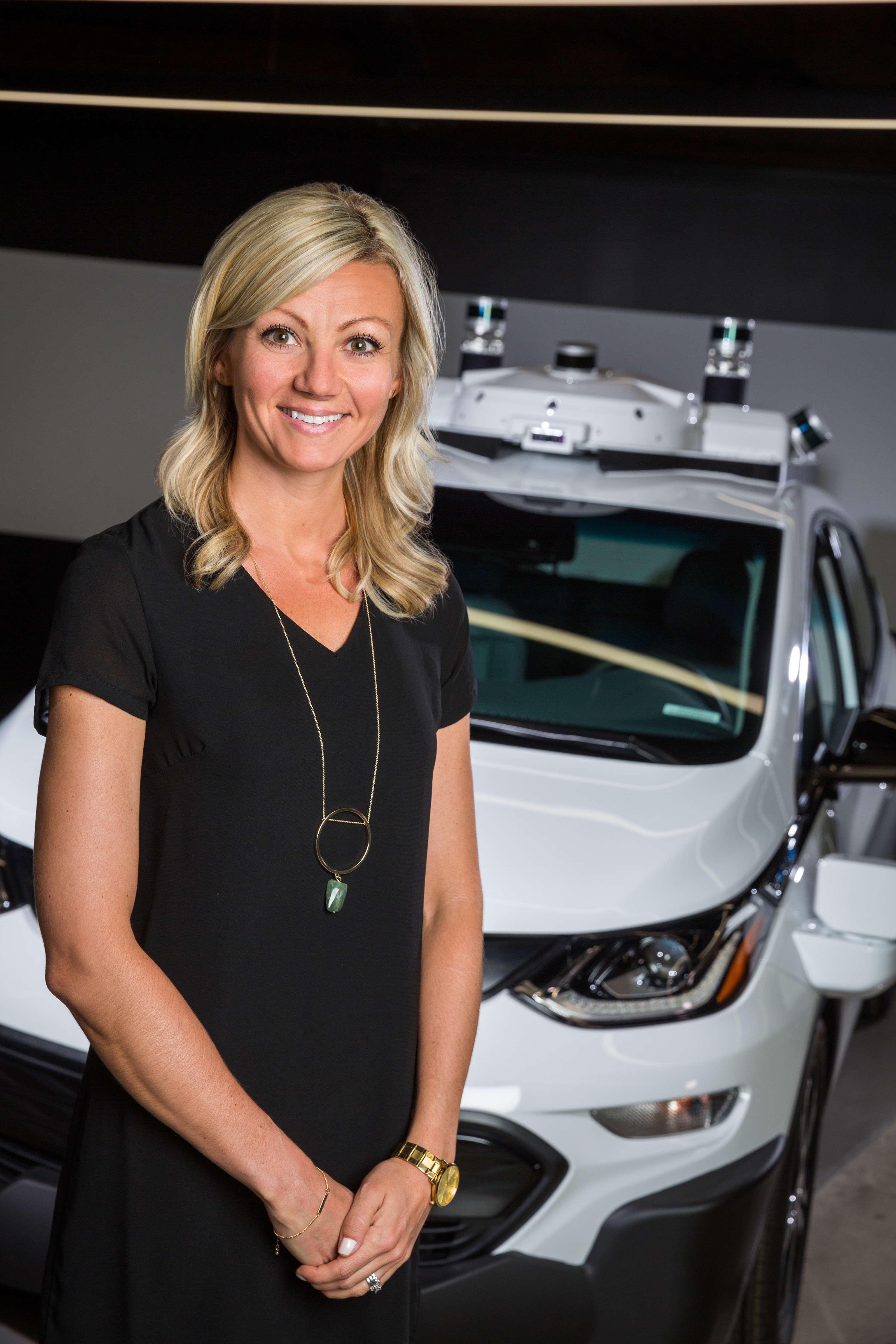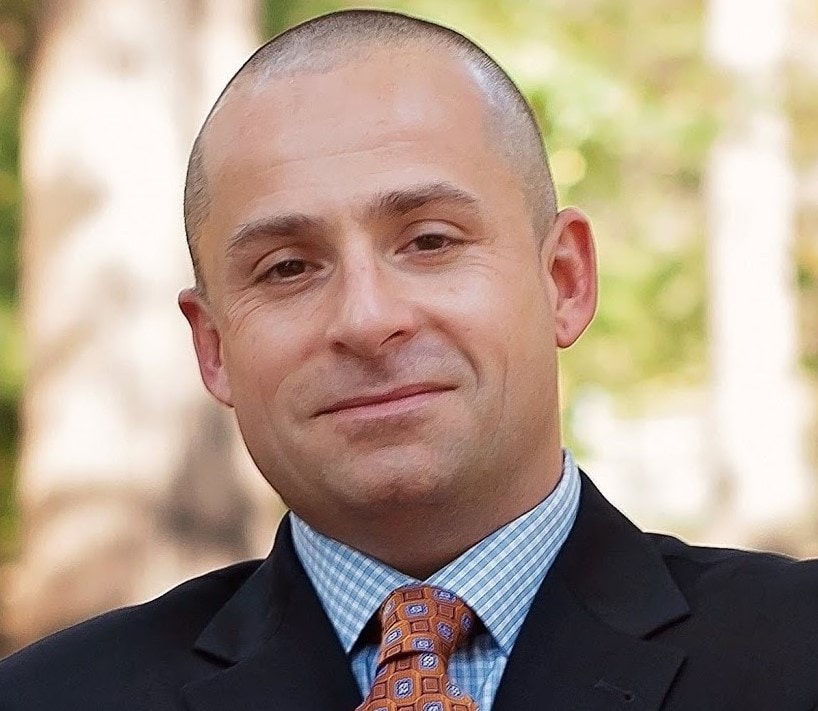
Building a driverless future An executive interview with GM’s Mandi Damman
6 minute read
04 January 2019
A driverless future beckons car companies to build the most effective and efficient autonomous cars. GM’s Mandi Damman speaks about creating environment-friendly autonomous cars, integrating cross-functional teams to succeed together, and what it means to be a woman in the automotive ecosystem.

Companies across a vast and expanding automotive ecosystem are racing toward a future of mobility in which autonomous vehicles figure prominently, potentially delivering highly touted benefits such as increased safety, less congestion, and reduced pollution. Still, the road to that future is long and filled with twists, turns, and unforeseen bumps. Automotive manufacturers are at the center of a global effort to create, test, and prove that autonomous technology can truly deliver the promised benefits.
General Motors (GM) is investing billions of dollars in its endeavor to build a driverless future. Guided by the company’s vision of zero crashes, zero emissions, and zero congestion, GM has announced plans to begin launching self-driving vehicles at scale in 2019,1 and add more than 20 electric vehicles to its product lineup by 2023.2
Learn more
Explore the Future of Mobility collection
Subscribe to receive related content
Download Deloitte’s 2019 Automotive News supplement
We sat down with Mandi Damman, GM’s chief engineer of autonomous vehicles, to discuss the journey to autonomous mobility. She shares her perspectives on challenges facing all automakers, GM’s innovations in autonomous vehicles, and the work she is doing to encourage young people to explore careers in engineering.
DELOITTE: General Motors’ CEO, Mary Barra, has expressed her vision to create a future with zero crashes, zero emissions, and zero congestion. What is your role in supporting that vision through the autonomous drive development program you lead at GM?
MANDI DAMMAN: The work we’re doing on the Autonomous Vehicle team touches each one of those pillars. Ninety percent of traffic-related accidents are caused by human error, so autonomous vehicles have the opportunity to make our roadways much safer—they don’t drive distracted, they don’t drive tired, and they don’t drive drunk. So we know that the work we’re doing can make our roadways significantly safer, and we’re committed to doing that.
At GM, we believe that autonomous vehicles should be electric vehicles, so we built our program off the zero-emissions Bolt EV platform, which is ideal for this application. In terms of zero congestion, deploying the first autonomous vehicles in a rideshare environment allows us to adjust the times when vehicles are on the road. When the cars aren’t transporting rideshare passengers, we can use them to deliver packages in the middle of the night to completely change the way mobility works. This is something that we’re doing to move humanity forward, and on the Autonomous Vehicles Program team, we have a huge role in doing just that.
DELOITTE: How do you engage the consumer on the concept of autonomous vehicles? How are you getting them to buy into the vision?
MD: We’re keeping the customer at the center of everything we do. We have started to communicate our approach to developing AVs safely, including a self-driving safety report that goes into detail on our technologies, our systems, and our product integrity. We’re committed to bringing the consumer with us on this technology journey. Ours isn’t like a typical vehicle program where you keep all your secrets and then one day the vehicle gets revealed. We are committed to bringing our customers along on the journey and showing them what we’re doing to build trust.
DELOITTE: Is the journey toward fully autonomous technology a stair-step approach where people are slowly adapting to individual safety features like automatic braking or adaptive cruise control, or do you see a more immediate, revolutionary shift at some point?
MD: We see two different, coexisting paths. On one hand is the revolutionary shift we’re working on to develop the technology, software, and business model required for a fully autonomous rideshare service. On the other is more of an evolutionary change built on increasingly capable driver-assist technologies.
DELOITTE: How do you collaborate with other development teams within General Motors that are working on advanced technologies such as vehicle electrification, light-weighting, and connectivity?
MD: Having everything under one big roof is what has enabled us to be successful. We brought our cross-functional team together at GM to work more closely in a shared space, so we actually have the autonomous team sitting near the electric vehicle team. We then pull in whomever we need to sit with us at each stage of the program, including members of the design studio, purchasing, engineering, and finance. This approach enables us to move fast by increasing communication and making it easier to find the experts we need to quickly tackle complex issues. We’ve used the model of co-locating and working together as one team to get us where we are today.
DELOITTE: When do you think we’ll get to an inflection point where fleets of autonomous vehicles are able to establish a foothold and start scaling?
MD: At our current rate of development, we’re focused on launching in a dense, urban environment in 2019 once we are satisfied that it is safe to do so. We’re committed to that and we’re working hard to achieve it.
DELOITTE: Other than the technology built into the car, what are some of the other elements required to make fully autonomous vehicles a reality?
MD: Ensuring that we have adequate fleet management—including frequent safety checks—and data infrastructure in place will be essential. From there, it’s on us to have the back-office connections to make sure the computing, perception, and overall vehicle technology is working as intended.
DELOITTE: As a woman leading one of the most exciting fields in the automotive industry right now, and as someone who is very passionate about STEM initiatives, what do you think is the best way to celebrate the contributions of women in automotive, and to inspire young women to consider the industry for a career?
MD: Having role models and finding a mentor is so important. I’m the first engineer in my family, which made choosing where I was going to go to school, what engineering degree I was going to pursue in undergrad, and ultimately where I was going to work quite challenging. I didn’t have very many role models in STEM, and I quickly realized there weren’t many engineers who looked like me. When I started as a co-op student, it was also hard to find a mentor, so I love getting out there in the community and talking to young girls, and mentoring colleagues at GM who are early in their careers.
DELOITTE: Are there examples of where mentorship or sponsorship really made a difference in your career?
MD: When I was first starting off as a co-op student, my neighbor knew a woman who worked at GM and happened to be a chief engineer. She was well-established in her career, but every time that I came back to work as a co-op student, we would meet, she’d buy me lunch, and we’d talk about how my current assignment was going and next steps. It was an informal mentoring relationship, but I continued to meet with her until she retired. She was a great advocate for me, and it taught me a lot about networking, mentorship, and building those critical relationships. GM is a big company and having somebody like that to help me navigate it and be an advocate for me was huge.
DELOITTE: One last question. If you had the chance to address a graduating class or group of young people, what would you tell them you enjoy the most about your job?
MD: One of the things I’ve realized recently is that I love how fearless young people are. I try to remind them never to lose that. I could have said “no” to a lot of challenging positions that frankly I thought I had no business being in along the way. But thankfully I took those opportunities to do something new and learn a new area of the business.
The coolest part of my job is the problems we get to solve. There is no recipe for what we do. There’s no vehicle development timeline that matches what we’re executing, but that is what makes it super fun and exciting. And if you stay fearless, you will be in a great position to solve future problems and build the foundation for an exciting career.
© 2021. See Terms of Use for more information.






